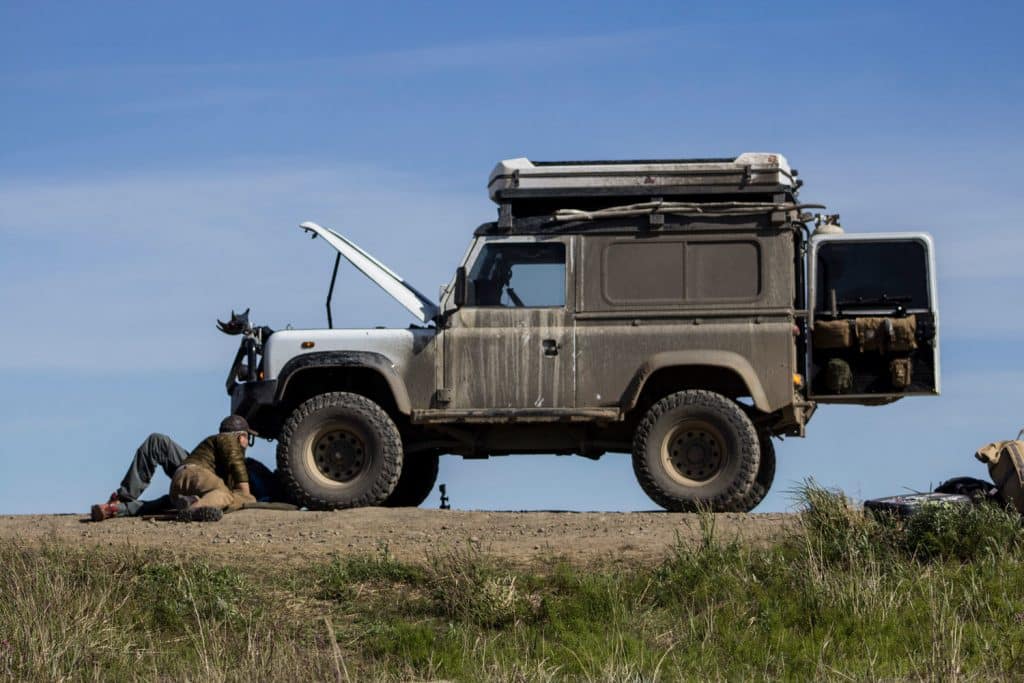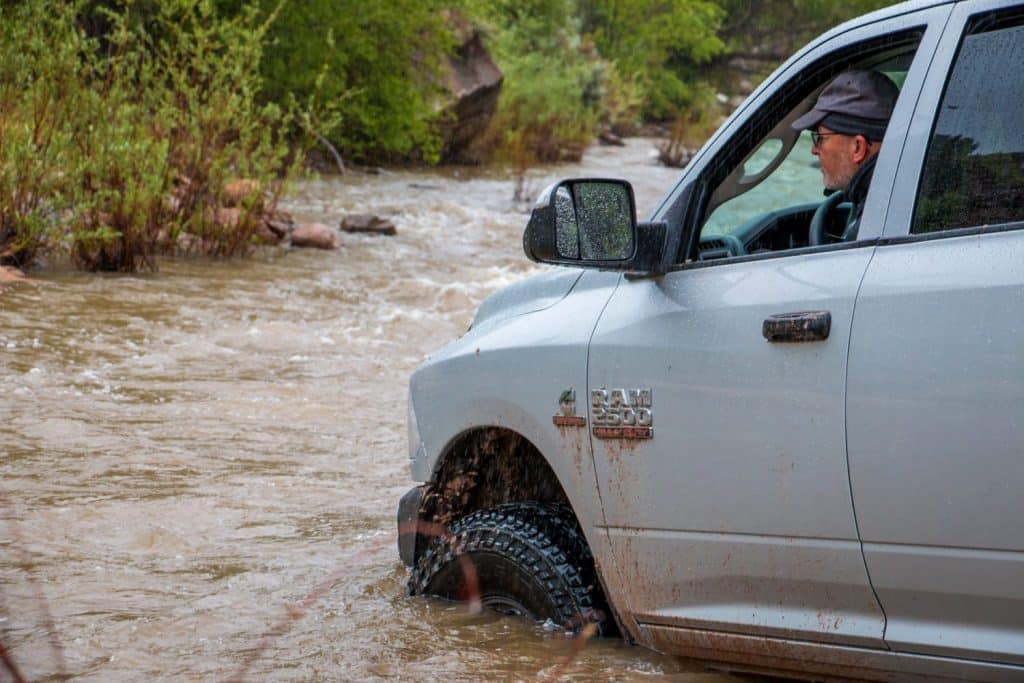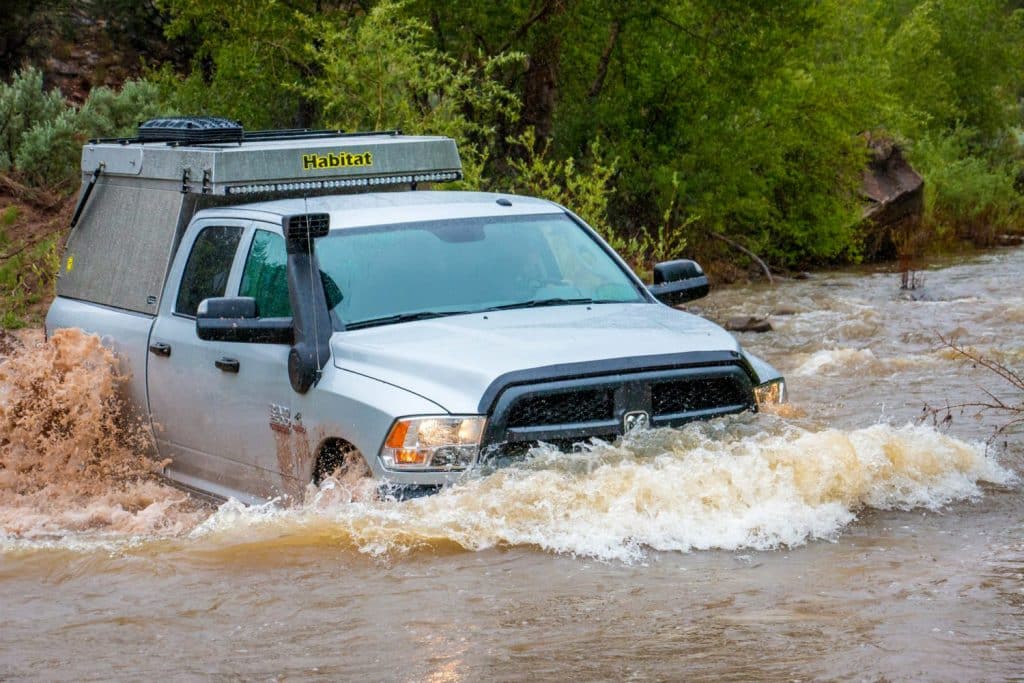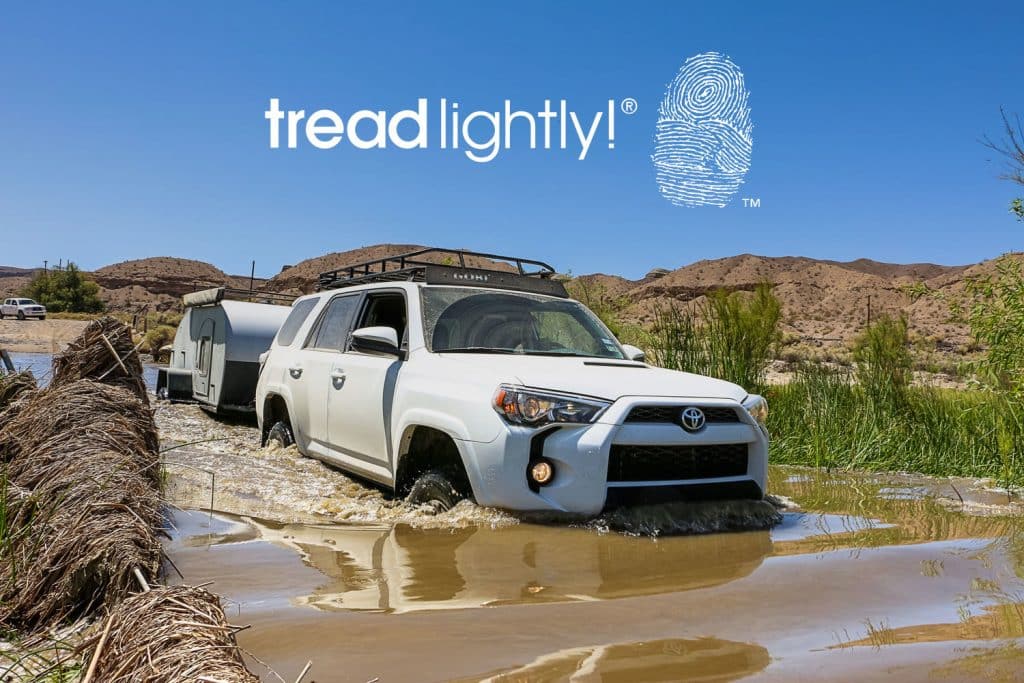4×4 Water Crossing: Safety and Tips
Note: This article is intended to offer general guidelines and tips for high-clearance 4×4 vehicles with experienced drivers crossing water. You are responsible for your own safety and best judgment.
Crossing water while off-roading can be fun and exhilarating, but it can also be dangerous and costly to your vehicle. An off-road “water crossing” is when a trail or road crosses through a small pool, creek, stream, or river, requiring the vehicle to pass through the water to stay on route. It’s best to always be prepared for a water crossing since they can appear unexpectedly due to seasonal changes.
Before attempting a crossing, review the basics:
- Preparing your rig
- Assessment of the water crossing
- Crossing water properly
- Tread Lightly principles

Preparing Your Rig
If you have a high clearance 4×4 stock vehicle and only plan on very shallow water crossings, you may not need to modify your vehicle. If you plan on off-roading frequently and want to be prepared, take note of a few suggested modifications:
• Install an extended breather kit and move your differential breathers higher up the chassis. This can prevent (but does not guarantee) water from being sucked into the housing instead of air, which can emulsify the oil.
• Make sure your standard air intake (usually behind the headlight) is above the deepest point of the water crossing. If you plan on doing deeper crossings — for the very experienced only — consider purchasing a snorkel and moving your air intake to the roofline of the car.
• Have your winch ready to use if your engine dies mid-crossing. Note that wireless winch remotes will not work when submerged. If you do not have a winch, attach a recovery or tow strap and have it accessible above the water line.
• Be aware of any electronic components that may be exposed to water during the crossing. ECUs, alternators, fuse-boxes, and many other components are often placed in locations susceptible to damage. Some may already be coated in dielectric grease or sealed from water ingress using another method, but you should do your research on the best method for protecting your specific vehicle.
• Take note of the engine-driven fan position in your vehicle. If the water level reaches the fan, it can not only shatter the fan but throw water across many important components under the hood.

Assessing the Water Crossing
First ask yourself: is this water crossing legal and absolutely necessary? Check your onX Offroad App to see if there are alternate routes, or maybe a bridge nearby. Then, stop the car and walk through the water, or have an experienced passenger do a walk-through. Taking a few minutes to assess the water will also give your differentials time to cool off, hopefully preventing water getting into the housing. In the water, consider depth — all the way across — current, hidden obstacles and water bottom: packed rocks are good, bottomless mud is bad.
Remember that, once you start driving, you will create a higher bow of water at the front of the vehicle. Take this into consideration when assessing water depth. Look upstream for any obstacles that could come loose.
Be very aware of the current. A water current at just 6 mph “exerts the same force per unit area as air blowing at EF5 tornado wind speeds, according to Dr. Greg Forbes, severe weather expert for The Weather Channel.” Bump that up to water flowing at 25 mph and you’re looking at a force of 790 mph, or faster than the speed of sound. Do not risk it. (Source.)
If you cannot walk through the water because of the current, obstacles, or if it’s too deep, then do NOT attempt to drive through it.

How to Drive Through Water
No matter what your friends say, never gun it into water. This can be very dangerous and costly to your vehicle. You risk hydro-locking your motor, shock cooling your components, and forcing water into critical components. People have been known to hydrolock and total their vehicle in one foot of water.
First, have everyone unbuckle their seatbelts and roll down their windows, especially if you have power windows, in case of an emergency evacuation. Never underestimate the strength of a “mild” current.
Then, ease into the water slowly and maintain the pace of a swift walk. This will keep the bow wave high, keeping water low in the engine compartment, but not too high so as to flood the vehicle. Drive straight ahead, or slightly downstream if necessary, avoiding pointing your vehicle upstream. Maintain an even speed. If you have a manual, do not shift while in the water to avoid stalling.
What happens if the engine dies? Do not attempt to restart the engine while submerged because water may enter and destroy it. Instruct everyone to safely evacuate the vehicle. Evaluate the situation, make sure the vehicle is secure, and then attempt a vehicle rescue.

Tread Lightly Principles
Tread Lightly is a national nonprofit organization committed to outdoor recreation and land stewardship. Through trainings and online certifications, they help educate people on how to have fun outdoors while also taking care of the land. The more we take care of our lands, the longer we can enjoy them. Here are a few tips as they pertain to water:
- Cross streams only at designated fording points, where the road crosses the stream.
- When possible, avoid mud. In soft terrain, go easy on the gas to avoid wheel spin, which can cause rutting.
- Avoid sensitive habitats, including living desert soils, tundra, and seasonal nesting or breeding areas.
- Before and after you ride, wash your vehicle to reduce the spread of invasive species.